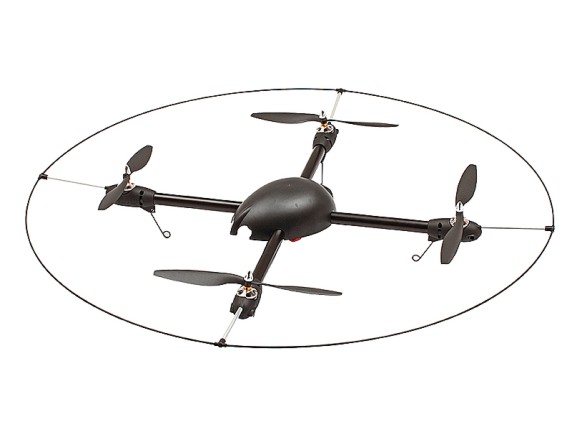Unmanned TiltRotor Hybrid TRH-14
TiltRotor Hybrid VTOL TRH-14
Project of unmanned aircraft - tiltrotor with hybrid drive.
In the existing drones with vertical takeoff and landing electric batteries are used as a power source, which is little effective, also in view of negative ambient temperatures.
Drones, built under “airplane” scheme, use parachute at landing, thus they reveal the location of section.
Drones, built under “helicopter” scheme, have low fuel efficiency, and therefore a very limited operational range.
The aim of the development was to create a drone with vertical takeoff and landing to use in different climatic conditions, including in the Arctic, that meets the stringent requirements of the operation, relatively simple and inexpensive, using internal combustion engines, having significant operational load and not requiring an aerodrome (catapult, parachute) for takeoff and landing.
The chosen scheme of a tiltrotor allows creating an aircraft with all the advantages of a helicopter, exceeding at times its speed, range and fuel efficiency. We have found an innovative replacement to the super-expensive stabilization system of well-known American tiltrotor OSPREY and applied it to drone aircraft.

tiltrotor OSPREY
At present, there are only two companies that have operating prototypes of drone tiltrotor with internal combustion engines:

Drone tiltrotor TR918 Eagle Eye by Bell Helicopter company

South Korean development TR-6X
Both presented samples had not been equipped with an effective stabilization system and work on them was suspended.
The main point of our construction is in the distribution of functions between the electric motors and internal combustion engines. The first are responsible for stabilization (the system was worked out on quadrocopters), the second - for lifting force.

Quadrocopters (the simplest and most effective system of stabilization of drone during flight)
The construction is patented (patent No. RU142287) and was awarded with gold medal at the exhibition in Geneva (Switzerland) in 2014.
The construction refers to dual-use machines. At planned payload capacity of 30-60 kilograms, it is able not only to find people suffering disaster, but also deliver them primary means of rescue and life support, communication tools, and a beacon for the rapid detection by the main rescue forces.
The specified payload capacity enables placing a significant for drone weapons and bomb load for high-accuracy and quick (from the detection of target) strikes at enemy targets.
The maximum speed will be comparable with speed of armed helicopters that will allow effectively destroying the latest with small arms bypassing the existing protection systems against heat-seeking missiles.
Landing on the heliport of any ship will not be a big deal.
Now the construction requires research and development.
At that, it should be noted that in the United States according to some estimations a similar project costed over 500 million dollars. And South Korea, thanks to “borrowed” from the USA technology, spent 5 years and 108 million dollars.
For the implementation of the project a space with the area from 5 hectares of land, four hangars with the latest equipment and financing not over than Korean will be necessary. The project implementation period is 2 years. Most of funds will be used for construction and purchase of equipment.
From the description of patent No. RU 142287
drive scheme

Basic propellers (1) driven by the internal combustion engine (3) and stabilizing propellers (4) driven by electric motors (2) are coaxially disposed. The goal of the main propellers is provision of uniform (due to the common shaft) (5)) lift capacity. The task of stabilizing propellers is to keep convertiplane horizontally, compensating the negative impact of external factors (atmosphere vibrations, for example) on the work of the main propellers. The electric motors are powered by electric generator and by battery as a reserve. We have added the ability to change the thrust vector of stabilizing propellers (alpha angle is shown on the figure) to ensure better maneuver power in hover.
Unmanned TiltRotor Hybrid TRH-14 layout scheme

There are convertiplane options for different tasks. The construction details have been worked out, so that the choice of option may be performed at the assembly line, but not designed from start:

The latest from the provided options can be equipped with solar panels, located on the wings, in order to increase the range of the machine using at horizontal flight electric motors only.
unmanned hybrid tiltrotor and simple stabilization system (Russian version)

TiltRotor Hybrid VTOL trh-14 by Artamonoff Technologies
Gold medal Inventions Geneva 2014



